Latest News
Hanukkah at the White House 2013/5774
Posted by on December 6, 2013 at 5:39 PM ESTOn Thursday, December 5, the President and Mrs. Obama welcomed members of the American Jewish community to the White House to celebrate Hanukkah. They hosted two receptions in the Grand Foyer of the White House. Guests included leaders from a broad range of national and local Jewish organizations; Supreme Court Justices; Administration officials; Members of Congress; leaders from the religious community, representing an array of denominations and organizations; athletes; actors; academics; musicians; authors; journalists; and other community stakeholders. The U.S. Marine Band, America’s oldest continuously active professional music organization, known as “the President’s own,” performed in the East Room.
At both receptions, the food preparation occurred under the strict rabbinical supervision of Rabbi Levi Shemtov, Lubavitch Center of Washington (Chabad), in cooperation with the Rabbinical Council of Greater Washington. Watch this remarkable still-camera video that captures the koshering of the White House kitchen.
Afternoon Hanukkah Reception
At the afternoon reception, arriving guests were welcomed into the White House to the sounds of Zemer Chai (“living song”), a choir of 30 singers from the Washington, DC metropolitan area dedicated to sharing the rich and diverse musical heritage of the Jewish people. Founded in 1976, the choir sings the full range of the Jewish repertoire.
The President and Mrs. Obama joined guests for the ceremonial candlelighting program as the eighth day of Hanukkah was drawing to a close. The President made remarks, recognizing the creators of “Thanksgivukkah” and the 10-year-old inventor of the “Menurkey,” created because of the intersection this year of Hanukkah and Thanksgiving. He then invited a military chaplain, Rabbi Amanda Lurer to recite an appropriate blessing to remind the gathering and the world of the meaning of this holiday. Rabbi Lurer serves in the U.S. Navy and recently returned from a nine-month deployment in the Eastern Mediterranean.
Following the blessing, Lainey and Kylie Schmitter, ages 8 and 4, respectively, lit the candles with a little help from their mom, Drew Schmitter. A military family, Lainey’s and Kylie’s Dad, Jacob Schmitter, is a graduate of the U.S. Naval Academy currently on his fifth deployment to a forward operating base in Afghanistan.
The Menorah
The Schmitters lit Manfred Anson’s Statue of Liberty Menorah, which pays tribute to the promise of America for Jews who have emigrated here to find new opportunity and, in many cases, rebuild their lives. In 1986, to celebrate the centennial of the Statue of Liberty, Anson created the Statue of Liberty Menorah, taking the design of a century-old Polish seven-branched menorah and adapting it for Hanukkah. He used a Statue of Liberty statuette for each branch of the menorah, transforming Lady Liberty’s torch of freedom into the candleholder for each night of Hanukkah and for the service candle. Also, he inscribed important events in Jewish history – from the Exodus from Egypt to the Holocaust and the establishment of the State of Israel –onto the base of each statuette and crowned the menorah with the American bald eagle. The Statue of Liberty Menorah being used this year at the White House was cast from the original mold in 2011 at the request of Dr. Aaron Feingold, who donated it to the National Museum of American Jewish History.
Evening Hanukkah Reception
At the evening Hanukkah Reception, guests were treated to the sounds of Pizmon, the coed Jewish a cappella group of Columbia University, Barnard College, and The Jewish Theological Seminary of America. Pizmon (Hebrew for the chorus of a song), performing Jewish music as a source of inspiration and community outreach, was founded in 1987 and is the first collegiate Jewish a cappella group.
The President and Mrs. Obama joined guests in the Grand Foyer for remarks and a candlelighting program. On a serious note, President Obama noted the passing, a few hours earlier, of former South African President Nelson Mandela. He spoke of Hanukkah as “a story of miracles, of a light that burned for eight days when it should have only lasted for one and a people who surmounted overwhelming odds to reclaim their historic homeland, so they could live their lives in peace and practice their religion in peace.”
The President then invited Rabbi Joshua Sherwin, a military chaplain who serves as the rabbi at the U.S. Naval Academy in Annapolis, to offer an appropriate blessing to remind the gathering and the world of the meaning of this holiday. The candles on a special menorah brought from the Jewish Museum in Prague were lit by two Holocaust survivors from the former Czechoslovakia, Margit Meissner and Martin Weiss, from Bethesda, Maryland. Both are volunteers at the U.S. Holocaust Memorial Museum in Washington.
The Menorah
The nineteenth-century brass menorah used at the evening reception – and the fate of the couple who owned it – illuminates the turbulent history of the Jewish community in Bohemia and Moravia during the first half of the twentieth century and the ultimate triumph of good over evil. In 1922, Abraham Isaac and Hayyah Ettinger, a husband and wife who lived in the Czech town of Hrušov, donated the 19th century brass menorah to the local prayer hall. They are named in the Hebrew inscription engraved on the menorah’s base:
The menorah was used in the prayer hall until the Nazis burned it down on the night of June 11, 1939, and demolished the rest of the building during the following winter. On November 23, 1939, after the annexation of the Czechoslovak border area (the Sudetenland), the Nazis expelled the Ettingers and their three children and deported them to Poland. The Ettingers were murdered by the Nazis in an unknown place in 1943.
Today, the menorah has been used to celebrate Hanukkah at the U.S. Ambassador’s Residence in Prague, a mansion that was built by a Jewish family in the 1920s and seized by the Nazis and used as a headquarters for their leaders during the German occupation.
Learn more aboutRecognizing World AIDS Day 2013
Posted by on December 2, 2013 at 3:17 PM ESTEd. note: This is cross-posted from The Justice Blog, the official U.S. Department of Justice blog. See the original post here.
“Federal law is a critically important tool in eradicating the discrimination that so many people living with HIV and AIDS still face in their daily lives. By enforcing the civil rights laws and educating members of the public about their rights and responsibilities, the Department of Justice seeks to eradicate the stigma and stereotypes that so often lead to unlawful treatment of people with HIV/AIDS. Along with our partner agencies under the National HIV/AIDS Strategy, we remain committed to using every tool available to protect the rights of individuals with HIV/AIDS.” -Attorney General Eric Holder
In recognition of World AIDS Day 2013, the Department of Justice reaffirms its commitment to eradicating stigma and discrimination against people living with HIV and AIDS across our country. President Obama’s National HIV/AIDS Strategy recognizes that important work as a priority. This year’s observance offers us the chance to both reflect on the work we have done in the past year to protect the rights of people with HIV/AIDS and – due to the sad truth of continuing discrimination – the significant work to be done in the year ahead.
The Justice Department’s Civil Rights Division HIV/AIDS enforcement work under the Americans with Disabilities Act (ADA) over the past year has been robust. Much of that work has involved allegations that individuals were denied care or were otherwise treated differently in health care, dentistry, or other clinical settings because they have HIV, and the department resolved those allegations through policy changes that ensure that all future individuals with HIV/AIDS would not face the same discrimination in those settings. These included settlements with a pain management clinic in North Carolina that refused to treat a patient due to her HIV status, a clinic in Missouri that refused to treat a woman with HIV for her serious eating disorder, a dentistry practice in Virginia that told a new patient with HIV that all of his appointments must be scheduled as the last appointment of the day, an alcohol treatment program in Ohio that excluded an individual from their program because of the side effects of his HIV medication, and a provider of bariatric surgeries based on the experiences of individuals in Pennsylvania and Michigan whose anticipated surgeries were cancelled or denied because of their HIV status.
Learn more about , Civil RightsDigital Connectivity Builds Classroom Etiquette
Posted by on November 26, 2013 at 4:46 PM EST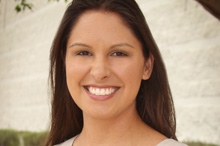
Misa Gonzales is being honored as a Connected Educator Champion of Change.
In the first part of my teaching career I did not have a guaranteed student base. I had to work to fill my classes, and work to keep my students coming back every week. I have kept that philosophy while teaching high school, and the use of technology in my classroom is one of the ways I interest my students in the worlds of reading and writing.
There are three things that are amplified when technology is used in an effective and efficient way in a classroom: the organization of the classroom, the communication within the classroom, and the community formed in the classroom. Without organization, it becomes chaos and teachers have been searching for years for a way to stay organized, but it never quite works. With a connected technology system, students can save all files, folders, and videos in the cloud and their items are never lost. The dog can never eat the homework, and if he happens to eat the laptop, the homework is still accessible on any other computer or cellphone connected to the internet.
This ability to seamlessly organize between student and teacher allows for a level of communication in the classroom that has never before been achievable. Through Google Docs a teacher can pull up a student’s essay, and can watch them type. He or she can monitor and adjust the student’s understanding as the student progresses through a paper, and when a cursor bar stops for an extended amount of time the teacher can check in with the student. Instant feedback through Google tools provides students with the ability to achieve their full potential. Communication through technology has allowed online collaboration between students to expand beyond traditional walls of the classroom.
The student’s ability to research across the world from cellphones and laptops has produced extensive opportunities to meet and work with other cultures and communities, and an ability to expand beyond the limitations of a traditional textbook. Students are never limited to what the teacher or the district knows, but are instead able to live and learn in a personalized learning environment. And finally, a whole new type of community is built and strengthened when students are guaranteed to have 100% digital connectivity, thus giving them the world at their fingertips, and allowing them to explore new cultures.
Organization, communication, and community build a bond of respect, trust, honor, and belief in my classroom. I believe in my students, I believe in their futures. I expect my students to walk out of every class with a feeling that they have completed something, a feeling of accomplishment. I will give you the numbers that are the most prominent in my classroom. I have 100% engagement in my room 100% of the time, and with that I also have a 100% turn in rate for all student work, and this is accomplished by 100% digital connectivity for all of our amazing students.
The technology that we use in my classroom helps to move my students forward at a pace that cannot be reached with the traditional paper and pencil format. My students have the accessibility of the world at their fingertips, and the ability to communicate through digital media like no other generation before them.
Misa Gonzales is a Freshman English teacher, at Desert View High School, in the Sunnyside School District, in Tucson Arizona. She graduated with her bachelor’s degree from the University of Arizona in Secondary Education, Extended English in 2011.
Learn more about EducationCreating a 1:1 Learning Environment
Posted by on November 26, 2013 at 4:42 PM EST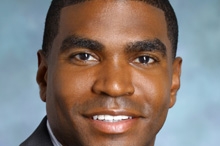
S. Dallas Dance is being honored as a Connected Educator Champion of Change.
A cartoon that I share in some of my presentations shows a class full of students. Each one of them is fully engaged in an activity – like passing notes, eating, drawing, yawning, whispering – but none of them, in many cases including the teacher, is fully engaged in teaching or learning. This is, of course, not a cartoon about Baltimore County Public Schools (BCPS), but it is a cartoon about the challenge before all educators to make learning relevant and effective for each student. The cartoon highlights that the old format of a teacher at a desk in the front of the room and students seated at rows of desks awaiting a lecture is disconnected from who our students are, how they learn, and what they need.
When I arrived just last year to assume the superintendency of BCPS, I was fortunate to join an already strong school district with a legacy of high achievement. More than half of our high schools rank among the best in the nation; our arts and music programs are award-winning; and our graduation rate, among large districts, is second-highest in the nation, according to EdWeek.
But being good on average is not the same as being effective for every student, and we have a moral and social imperative to ensure that every student graduates globally competitive. What I call my reasonable impatience about this has only grown more intense since I became a father. I want for every child the same as I want for my own son, and I realized, as I nurture his growth, that we have only one chance to get it right for our students.
I have focused my BCPS administration on building the collective will to pursue deliberate excellence for our students and putting the physical and programmatic structure in place to facilitate achieving our goals. Through meetings, information sharing, and collaborative decision making, we are uniting the entire community into Team BCPS.
This team helped us develop our theory of action and Blueprint 2.0, our five-year strategic plan, which calls for, among other initiatives, an instructional digital conversion to a 1:1 learning environment and an expanded world languages program so that our students can graduate fluent in a second (or third) language.
Learning via technology has multiple benefits: allowing students access to more accurate and timely information and to other teachers and learners around the globe; personalizing the pace of learning for each student; providing instant feedback and assessments for students and teachers; supporting inquiry-based learning and the development of 21st century skills like critical thinking, creativity and collaboration; and using the technology in which students are already immersed to better engage them in their school work.
Moving to a 1:1 environment also levels the playing field – which is the role of public schools. All students need meaningful access to technology for 24/7 learning to occur. Without a 1:1 environment in our schools, there is still a digital divide between those who have access to computers and the Internet and those who do not. We plan to close the digital divide in our schools.
The other major component of the BCPS theory of action is supporting students in becoming proficient in a second language. We know that this is another essential factor in being globally competitive, and research tells us that students who begin learning a second language before adolescence are more likely to become fluent speakers and to have higher overall academic achievement.
By pairing expanded world languages instruction with 1:1 environments, we will create classrooms that will be the opposite of the cartoon I described earlier – 21st century classrooms where teachers guide students toward higher levels of academic rigor and success.
S. Dallas Dance is the superintendent of Baltimore County Public Schools, the nation’s 26th largest school system.
Learn more about EducationGaining Global Perspective through Technology
Posted by on November 26, 2013 at 4:31 PM EST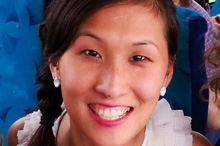
Jennie Magiera is being honored as a Connected Educator Champion of Change.
Classroom Technology is just window dressing; Twitter is for Bieber-loving teens; social networks have no place in schools. These are all opinions I firmly believed less than four years ago. However, in the fall of 2010, I found myself with 32 iPads in my classroom. I spent the first three months floundering to find effective strategies to use these devices. After some time, I realized that I couldn’t do this in a vacuum; I needed support from my colleagues. But as the only iPad teacher in the school, I couldn’t simply go next door and ask for help. I needed a way to reach beyond the walls of my classroom and my building, in order to connect with other iPad-using teachers from around the globe.
This was the beginning of my rebirth as a Connected Educator. In the next few months, I began to subscribe to blogs, join listservs, and enter online communities of educators. In June, I even created a Twitter account. Perhaps a telling example of my shift in thinking, my first tweet, posted on June 7, 2011, was about connecting my students digitally: “Trying out back channel student discussions via twitter... so far so good! Kids are really engaged! And QUIET!!!”
Suddenly my classroom wasn’t about closing the door, teaching a “good” lesson, and then testing my students to see if they “got it.” Instead, the world was my classroom and the globe was our community. This was huge for a fourth grade classroom in an inner-city Chicago school. Students who rarely travelled out of a 15-block radius were suddenly able to connect with nine-year-olds from Brazil. I was able to bring an archeologist into my room via Skype to weigh in on our rock cycle unit. We streamed footage of the Space Jump to explore the layers of the atmosphere. My students hopped on a Google Hangout with another Chicago class to discuss violence in their community.
My students weren’t the only ones who benefitted from this new “connected” mindset. Thanks to those blogs, listservs, online communities and yes, Twitter, everyone on the web was my colleague or co-teacher. I got feedback from teachers in Seoul, Melbourne, and Montreal on my first Problem Based Learning unit. I joined various Google Hangouts to problem solve issues in my classroom. I worked with six teachers from three countries to share this experience by creating courses on iTunes U about teacher professional development strategies. And most recently, I was honored to work with an incredible group of educators to support and promote Connected Educator Month on Google+ and other online platforms.
Beyond enriching my teaching practice and my students’ learning experiences, becoming a Connected Educator has helped me become less myopic about what teaching and learning can look like. I have gained a more global perspective on the classroom and realized that one way of doing things is not the only way to do them. I’ve also gained an international posse of friends, changemakers, and edu-avengers. These are people who want to improve education for our students and who make strides to take idea into practice every day. They keep me inspired, vet my ideas and push me to never settle. I’ve learned that our best isn’t good enough - we must always be improving, asking questions and making new connections - all to support our students’ growth into the best version of themselves.
Jennie Magiera is the Digital Learning Coordinator for a network of 29 Chicago Public Schools, called the Academy for Urban School Leadership. She works to support teachers, students and school leaders to leverage digital tools in improving teaching and learning.
Learn more about EducationHow Technology Levels the Playing Field
Posted by on November 26, 2013 at 4:28 PM EST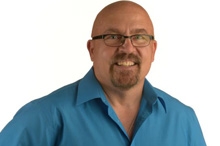
Mark Coppin is being honored as a Connected Educator Champion of Change.
One of the driving forces in my life and something that I am very passionate about is accessibility. To me, it means more than accessibility; it is accessing abilities. It is finding the tools that allow diverse learners the opportunity to access their education, their world, and their dreams. Today’s technologies are opening up a world of possibilities for students with diverse learning needs. Technology is leveling the playing field and providing students with opportunities that were difficult or impossible to provide only a few years ago. It allows us to look beyond the disability and focus on the ability. I am honored to be selected as a White House Champion of Change as it will provide me with a broader platform to spread the word on how providing equal opportunities for all learners can transform lives.
I have been the Director of Assistive Technology at the Anne Carlsen Center for over 25 years. The Anne Carlsen Center is a private non-profit center located in North Dakota that serves persons of all abilities throughout the state and region. I started out as a teacher at the center, and early on I realized the power of assistive technologies in providing opportunities for students with special needs. Throughout my professional career, I have looked for various ways to provide opportunities for people to realize their full potential. I helped host a summer technology camp during which kids from across the state who wouldn’t typically be accepted into a traditional camp are provided with access to all types of assistive technologies. Once they are able to utilize the devices, we provide them with opportunities to explore music, art, photography, and videography. We also give them the chance to experience typical camping activities such as campfires, pontoon rides, and swimming in a lake.
As an Apple Distinguished Educator of 2009, I speak to professionals throughout the world about the impact technology has to help people access their abilities, transform lives, and provide limitless opportunities. I believe that we can create meaningful change by educating people on inclusive design and working with software and hardware developers to include universal design features in their products. This will create an environment and culture that provides equal access for all learners. By creating learning environments where people of all abilities have equal access to tools, no matter what their ability, we can maximize learning and provide opportunities for students to realize their full potential. The motto at the Anne Carlsen Center is: “Nurturing Abilities and Changing Lives.” This is the approach that I take with everything I do.
I believe that technology can help level the playing field and provide opportunities for all persons. When everyone is given the same opportunity this can change attitudes, perceptions, and culture. We are putting tools into the hands of our students and allowing them to become, not only productive participants in our future workforce, but also mentors, future leaders, and role models. They will be able to change attitudes and affect change. Every day I am inspired by individuals who have overcome barriers; today’s technologies allow them more opportunities to do so.
Mark Coppin is the Director of Assistive Technology at the Anne Carlsen Center, a non-profit center serving persons with disabilities located in Jamestown, ND. He is also an Apple Distinguished Educator.
Learn more about EducationLibrarians Sharing New Ideas Across the Globe
Posted by on November 26, 2013 at 4:25 PM EST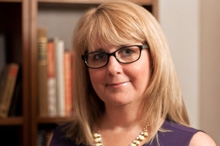
Carolyn Foote is being honored as a Connected Educator Champion of Change.
Providing our students opportunities to be prepared for the future is crucial. Across the nation, thousands of dedicated educators and librarians are leading the charge to help students investigate, create, collaborate and communicate effectively, and to reach beyond the walls of their own schools.
I am honored to represent a large community of connected librarians across the nation who play a uniquely significant role in assisting teachers as they become comfortable with new technologies, and who link teachers and students with the tools and resources that help them become “connected” learners. While librarians have always been resource mavens and curriculum specialists, our roles have broadened to include the technology tools and strategies that prepare our students for an always connected future. That can mean connecting our ASL students via Skype so they can teach a Canadian student sign language, hosting a robotics makerspace in the library, building a list of web resources for our Vietnam memorial project, or discovering new devices that will aid student research.
When tablets entered the commercial marketplace, for example, I was eager to pilot them in the library in order to determine their efficacy for our teachers and students. As an early adopter, I began with just six tablets to gather information on their usefulness for student learning both within the library and the classroom. Three years later, with the dedication of a tribe of people, we are now a one-to-one tablet district k-12 and are entering our third year hosting an annual conference for tablet users across the country.
As a librarian (in concert with technology staff), I supported the initiative in many ways: redesigning the library to include a tech “help desk”, building lists of appropriate apps, developing projects with students and teachers, and documenting our initiative on a campus blog. I have networked with librarians around the country as they grapple with similar issues from e-books to library redesign; even when we redesigned our own library six years ago, many of the future-friendly features that make our library a vibrant hub were inspired by other colleagues online.
As a librarian, I play a vital leadership role with my unique expertise about research and literacy. But I and other librarians cannot develop our skills in a vacuum. Wired librarians across the globe have banded together to build resources for one another, like the Teacher Librarian Virtual café. This program, led by volunteers, hosts monthly online programming and supports weekly Twitter chats. I also engage with Texas librarians during the weekly Texas Library Twitter chat and network during national events like the Connected Educator month with Secretary Arne Duncan, and the free K12online Conference, which gave me the first thrilling taste of connecting with educators globally.
These ongoing connections have imbued my own practice with the most empowering professional learning I have ever been a part of; I can wake up chatting with educators in Australia, connect with colleagues on campus during the day, and go to bed having chatted with colleagues on the West Coast. Rather than work alone, librarians have grown wide networks of colleagues that both support and challenge us, and we, and our schools, are better for it. For me, this incredible honor to be named as a Champion of Change is a recognition not only of my own work as a “technolibrarian”, but more importantly of all of my connected colleagues and their incredible dedication to better our profession. We care fiercely about educating our students and about moving our schools forward. And these connections make our work much richer. Thank you for recognizing that “connecting works” and thank you for this honor.
Carolyn Foote is the district and high school librarian at Westlake High School in Eanes Independent School District in Austin, Texas who is fascinated by the intersection of technology and libraries.
Learn more about EducationTraining Students to Use Technology Creates Real Potential
Posted by on November 26, 2013 at 4:23 PM EST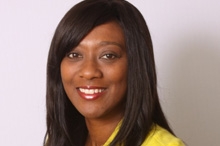
Daphne Bradford is being honored as a Connected Educator Champion of Change.
On February 6, 1999 I had the pleasure of interviewing civil rights icon Rosa Parks for a Black History Month segment to be aired via Bailey Broadcasting Services nationally syndicated radio network. During this “I can’t believe I’m talking to Rosa Parks” interview, I was amazed to hear about how she learnedto email in her 80’s. Inspired by this conversation, I established the grassroots non-profit Mother Of Many (M.O.M.), on August 12, 1999. America was on the brink of entering the 21st century and I had a dream of making history by bridging the digital divide between the civil rights generation, the hip-hop generation, and their children.
Developing Digital Media Geniuses became Mother Of Many’s inaugural technology program. Designed to provide technology training to economically disadvantaged high school students, the program prepares students for 21st century college and career opportunities. The curriculum was first implemented in Watts, CA at Locke High School where I was hired as a Professional Expert to train at-risk students to produce radio news shows. Watching students who were failing math, science, and English re-engage in education by earning certifications in industry software programs Final Cut Pro and Logic Pro was awe-inspiring. In recognition of this, work Apple selected me as a 2007 Apple Distinguished Educator upon securing Locke High School as the corporation’s first Authorized Training Center for Education within the Los Angeles Unified School District. This was the same year a hopeful Senator named Barack Obama began his presidential campaign and the same year the iPhone began changing global communication.
I realized then that technology had a ubiquitous behavior that would become uncontrollable for educators if they did not connect with it and become friends. Providing Internet access space for all students, undocumented and citizens, was a necessity. Looking into the eyes of a reformed student encumbered by a house arrest ankle bracelet while he’s telling me “Ms. B, you know you can help save me,” reinforced my goal to create a scalable model for schools across the nation. This desire led me to partnerships with KABC-7 News and KNBC-Los Angeles digital news. Some of my students earned internships at the Ogilvy and Mather Advertising agency. Expanding my efforts, the Los Angeles Urban League contracted me to train Crenshaw High School students’ podcast engineering. Using their new skills, these advanced students then published the book, Journey to the White House, and taught podcasting classes at the Cal State Dominguez Hills Osher Life Long Learning Institute.
Always looking for new opportunities, I was searching around and discovered Microsoft’s Innovative Educator (MIE) program, which honors teachers for effectively using technology in their curriculum to increase student engagement and success. Upon applying, Microsoft selected me as a 2011 Innovative Educator and 2012 MIE Trainer. This opened the science, technology, engineering and math (STEM) door for Mother Of Many students to learn coding and game design. The Crenshaw Digital Media & Gaming Team became the first group of Los Angeles Unified School District (LAUSD) students to publish a game, Going Banana’s for Health, in the Windows 8 App Store. M.O.M. also partnered with Dorsey High School’s Math and Science Magnet Academy to expand student’s interest in STEM related careers. It’s an honor to be selected for Mother Of Many students and partner school principals as a Connected Educator Champion of Change. Thank you.
Daphne Bradford is the founder and president of Mother Of Many (M.O.M.), a grassroots organization dedicated to bridging the digital technology and STEM career divide with scalable models of success for schools across the United States.
Learn more about Education
- &lsaquo previous
- …
- 47
- 48
- 49
- 50
- 51
- 52
- 53
- 54
- 55
- …
- next &rsaquo


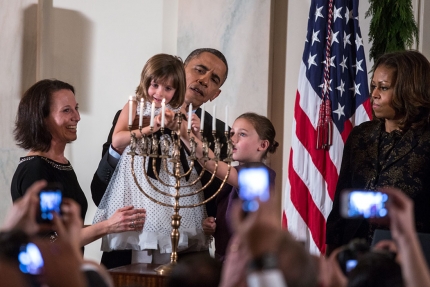
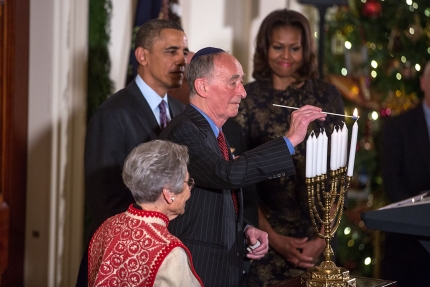
Twitter